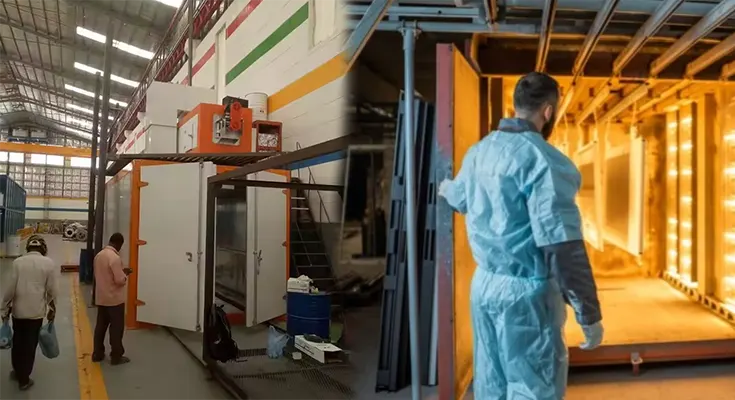A powder coating oven is a workhorse, ensuring coatings cure smoothly and adhere perfectly. However, even the most reliable ovens show signs of wear and inefficiency over time. Catching these signs early can keep your operations running smoothly and maintain the quality of your finishes.
Uneven Heating Patterns Affecting Coating Quality
Uneven heating is one of the most telling signs that your powder coating oven needs attention. If some parts come out overcooked while others barely cure, the airflow or heating system might be the culprit. These inconsistencies can lead to weak spots in the coating, which chip or degrade faster than usual.
Air circulation inside powder coating ovens is critical. When fans or ducts are obstructed, heat distribution suffers, creating hotspots and cooler zones. Insulation breakdown is another common cause of uneven heating. Heat escapes from poorly insulated areas, leading to energy loss and longer curing times. Regular maintenance, such as cleaning fans and checking insulation, helps ensure even heating and better coating quality.
Unusual Noises Indicating Component Wear or Damage
Strange noises coming from your powder coating oven should never be ignored. Whether it’s a rattling fan, grinding motor, or whistling airflow, these sounds often point to mechanical or structural issues. Over time, wear and tear on moving parts can lead to loose components or failing systems.
Fans and motors are common culprits behind unusual noises. Worn bearings, for instance, can create a grinding sound that signals it’s time for replacement. If airflow sounds erratic, it could indicate a blockage in the ducts or a damaged fan blade. Addressing these noises promptly prevents small issues from becoming costly repairs. Listening to your oven can be one of the easiest ways to catch maintenance needs early.
Increased Energy Consumption Suggesting System Inefficiency
A sudden spike in energy bills might not just be seasonal—it could be your powder coating oven crying out for help. Ovens that consume more energy than usual often struggle with maintaining consistent temperatures, likely due to worn components or poor insulation.
Overworked heating elements or failing blowers can force the system to compensate for inefficiencies, driving up energy use. Heat leaks through damaged insulation or poorly sealed doors exacerbate the problem. Monitoring your oven’s energy consumption is an easy way to track its performance. Regular checks and timely repairs can bring your energy costs back in line while keeping your operation eco-friendly.
Inconsistent Temperature Readings from Faulty Sensors
If your temperature readings bounce around unpredictably, your powder coating oven’s sensors might be to blame. Thermocouples are essential for ensuring precise temperature control, and when they fail, curing quality suffers. Faulty readings can result in coatings that don’t adhere properly or develop imperfections.
Poor sensor placement within the oven can also contribute to erratic temperature data. Thermocouples need to be positioned where they accurately represent the oven’s internal conditions, not too close to heating elements or cool spots. Replacing or recalibrating faulty sensors ensures consistent heat levels and prevents unnecessary trial and error during production.
Visible Damage or Wear on Door Seals and Insulation
The seals and insulation of your powder coating oven play a huge role in maintaining proper heat levels. Cracked or worn seals allow heat to escape, making it harder for the oven to reach curing temperatures. Likewise, damaged insulation leads to uneven heat distribution and higher energy consumption.
Door seals endure frequent wear as they open and close during operation. Inspecting them regularly for cracks, gaps, or looseness can help prevent heat loss. Similarly, insulation should be checked for damage or degradation. Replacing worn materials not only restores efficiency but also ensures that parts inside the oven cure evenly and reliably.
Prolonged Heating Times Impacting Production Schedules
When a powder coating oven takes longer to reach the desired temperature, it’s often a sign of aging components or inefficiencies in the system. Extended heating times can throw off production schedules, creating bottlenecks that affect your overall output.
Heating elements and blowers are often the first to show signs of age. As they lose efficiency, they struggle to perform, forcing the oven to compensate with longer cycles. Addressing these issues promptly helps avoid costly delays and ensures that your oven remains a reliable part of your production line. Investing in regular maintenance keeps your oven running efficiently, saving time and energy in the long run.





